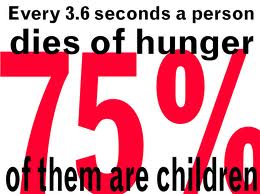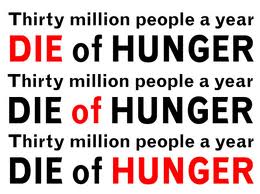The Supplemental Nutrition Assistance Program (SNAP); relieving hunger
Not many countries or people around the world associate hunger with people within the United States. But in reality it is a silent epidemic. The face of “hunger” is commonly associated with the homeless or people  experiencing severe hardship in third world countries, caused by various economic, social or natural disasters. It has been determined that 46 million Americans, which include 16 million children, live in households that can’t afford enough food. This means one in six Americans and one in five American children live in homes that live at the brink of hunger. Most of these families are not homeless; they live in urban and rural areas, and most hungry families are white. The majority of hungry Americans are low wage workers, children, people with disabilities and senior citizens. Contrary to belief the main problem causing this issue is not laziness. Families experiencing hunger hardship in most instances have; one adult working full-time or part-time or actively looking for work, or the household is headed by an adult with a disability.
experiencing severe hardship in third world countries, caused by various economic, social or natural disasters. It has been determined that 46 million Americans, which include 16 million children, live in households that can’t afford enough food. This means one in six Americans and one in five American children live in homes that live at the brink of hunger. Most of these families are not homeless; they live in urban and rural areas, and most hungry families are white. The majority of hungry Americans are low wage workers, children, people with disabilities and senior citizens. Contrary to belief the main problem causing this issue is not laziness. Families experiencing hunger hardship in most instances have; one adult working full-time or part-time or actively looking for work, or the household is headed by an adult with a disability.
SNAP is just one of the many programs in theUnited Statesthat works to get food assistance to those who need it most. The New York Coalition against Hunger reported that SNAP supplies 15 times more food than any food bank,or soup kitchen. SNAP is a means of averting hunger in families experiencing extreme distress. It helps families to lessen the severity of poverty by putting food on their tables.
Can you imagine working hard each month and after paying for utilities; being unable to buy food? I am sure  most of us can empathize. As a mother the thought of not being able to feed your children is terrifying. SNAP assistance is a program that makes the problem of hunger one less overwhelming burden. The fear of hunger becomes one less stressor in these tough economic times.
most of us can empathize. As a mother the thought of not being able to feed your children is terrifying. SNAP assistance is a program that makes the problem of hunger one less overwhelming burden. The fear of hunger becomes one less stressor in these tough economic times.
SNAP allows families to take care of their utilities and know that there is money left for food. They are assured that if they were to fall sick or lose their jobs, they would still be able to put food on their table. Their children do not have to go to school hungry, or worry about meals being unavailable at home. It does not put a limit on the types of food they can purchase. They are able to shop at a wide variety of grocery stores and farmers markets.
Many American Families relied on SNAP to provide a Thanksgiving meal for their families this season, and I am sure it will provide a Christmas meal for them also. These families are able to focus on other issues, without fear of hunger.
SNAP participation is a sure way to get food to Americans in need. Information on program should be made available through food banks, soup kitchens and emergency food centers, which serve a large portion of the  population affected by hunger. The fact that hunger is an epidemic speaks volumes; more information needs to be given to the public so all those in need can be helped.
population affected by hunger. The fact that hunger is an epidemic speaks volumes; more information needs to be given to the public so all those in need can be helped.
SNAP and other food assistance programs fill a significant void in the lives of many individuals. These are extremely harsh economic times and such programs are a necessity. One of the ways to reduce hunger in the United States is to increase information and participation in the federal assistance programs available; SNAP, the National School Lunch Program, The National School Breakfast Program, The National Summer Food Service Program, The Women, Infants, and Children (WIC) Program are all associations which work to get food assistance to individuals who need it.
If you are in need of help this holiday season here is a link with more information on accessing food assistance.


